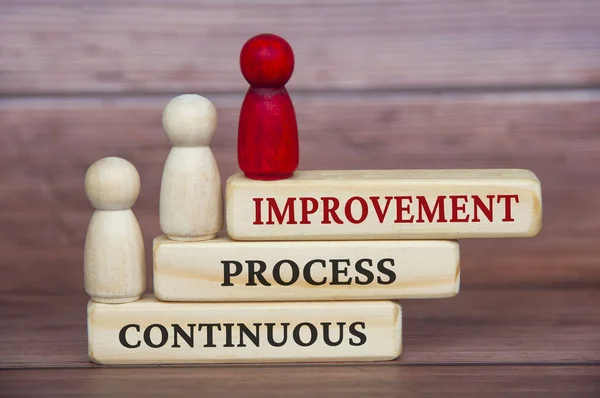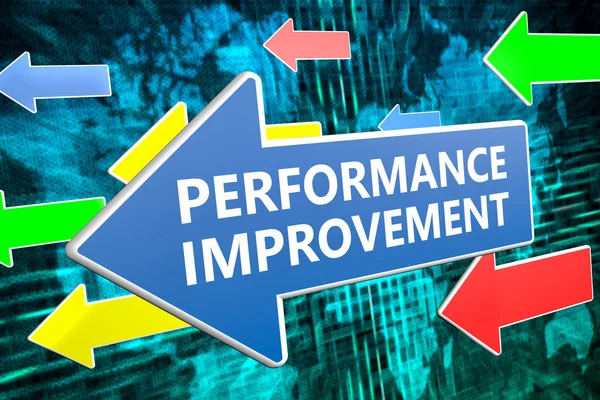
Key Takeaways
- Business Process Improvement (BPI) streamlines operations, reducing waste and boosting efficiency across departments.
- Marketing efficiency directly influences customer acquisition, retention, and revenue, impacting overall business success.
- Methodologies like Six Sigma, Lean, and Kaizen provide structured ways to enhance processes, with marketing as a powerful starting point.
- A case study on Instagram engagement for a fashion retailer highlights how Six Sigma can yield measurable results.
- Continuous improvement ensures long-term growth by fostering adaptability and precision in business practices.
What is Business Process Improvement (BPI)?
Business Process Improvement, or BPI, is a systematic approach to identifying, analyzing, and refining the workflows that drive an organization. It’s about making processes faster, cheaper, and more effective without sacrificing quality. Think of it as a tune-up for your business engine—pinpointing what’s clunky and smoothing it out. Companies use BPI to cut costs, improve customer satisfaction, and stay agile in a changing market. It’s not a one-time fix but a mindset of ongoing enhancement. By focusing on measurable outcomes, BPI turns vague goals into concrete results. Marketing, with its data-rich environment, is a prime candidate for this approach, as small tweaks can lead to big wins.
Key Concepts in BPI
At its core, BPI revolves around a few foundational ideas. Efficiency is the star—eliminating unnecessary steps to save time and resources.
- Quality follows close behind, ensuring that improvements don’t compromise what customers value.
- Adaptability matters too; processes must evolve with new challenges.
- Data-driven decision-making ties it all together, replacing guesswork with hard evidence.
In marketing, these concepts might mean trimming bloated ad campaigns or speeding up content approval cycles. The goal? A leaner operation that delivers more impact with less effort. These principles aren’t just theory—they’re the backbone of every successful BPI effort, guiding businesses toward smarter ways of working.
How Marketing Efficiency Impacts Business Success
Marketing efficiency measures how effectively resources (budget, time, talent) convert into revenue. A high marketing efficiency ratio (MER)—calculated as Revenue Generated / Marketing Costs—indicates strong ROI. For example, a MER of 4 means $4 revenue per $1 spent.

Why It Matters
- Cost Savings: Efficient campaigns reduce wasted ad spend.
- Scalability: Automated workflows free teams for strategic tasks.
- Data Alignment: Metrics like customer acquisition cost (CAC) inform broader operational decisions.
Consider a logistics company that automated shipping documentation reviews, slashing processing time by 60% and saving 900 monthly work hours. Similarly, marketing teams using A/B testing and CRM analytics can refine campaigns in real time, driving efficiency across sales and customer support.
Business Process Improvement Examples and Methodologies
BPI isn’t a one-size-fits-all fix. Different methodologies offer unique lenses to tackle inefficiencies. Let’s explore a few, starting with a detailed case study, then broadening out to other approaches that complement marketing and beyond.
Six Sigma Process
Six Sigma is a data-driven methodology laser-focused on reducing defects and variability. It’s about precision—using statistics to measure performance and root out flaws. Companies like GE and Motorola have famously used it to save billions. In marketing, it’s a game-changer for campaigns needing consistent results.
Case Study: Improving Instagram Engagement for a Fashion Retailer
Imagine a mid-sized fashion retailer struggling with lackluster Instagram engagement. Posts were sporadic, and likes hovered below industry averages—hardly the buzz needed to move inventory. The marketing team turned to Six Sigma to crack the problem. Using the DMAIC framework (Define, Measure, Analyze, Improve, Control), they got to work.
Problem Identification and Six Sigma Application
First, they defined the issue: engagement rates 30% below competitors. Measuring revealed inconsistent posting times and generic captions. Analysis dug deeper—data showed followers responded best to vibrant visuals posted at 7 p.m. on weekdays. The improvement phase tested a new schedule and tailored content, boosting likes by 25% in two weeks. Control locked in the gains with a standardized posting calendar. By month’s end, engagement soared 40%, driving a 15% sales uptick. This wasn’t luck—it was Six Sigma turning chaos into a repeatable win.
Broadening the Scope: Total Quality Management (TQM) and Continuous Improvement
TQM takes a wider view, aiming for quality in every process, not just one. It’s about building a culture where everyone—from marketers to warehouse staff—owns improvement. Unlike Six Sigma’s tight focus, TQM spreads its net across the organization. A retailer might use it to align marketing with supply chain, ensuring ads don’t promise what stock can’t deliver. Continuous improvement, a TQM pillar, keeps the momentum going. It’s less about big overhauls and more about steady progress—think of it as daily exercise for your business, building strength over time.
The Philosophy of Kaizen: Embracing Incremental Changes
Kaizen, a Japanese approach, thrives on small, consistent steps. It’s less intimidating than sweeping changes, encouraging teams to tweak processes bit by bit. A marketing team might start by shortening email draft reviews from three days to one. Over months, these micro-wins compound—say, cutting campaign launch times by 50%. Toyota’s success with Kaizen proves its power; they’ve shaved seconds off assembly lines, saving millions. For marketing, it’s a low-pressure way to build efficiency without burnout, fostering a habit of progress that sticks.
Lean Management
Lean strips away anything that doesn’t add value. Born in manufacturing, it’s now a marketing favorite. Picture a team bogged down by endless meetings—Lean cuts them, redirecting energy to customer-facing work. A 2022 McKinsey study showed Lean adopters reduced process times by 30%. In marketing, it might mean ditching a clunky approval chain so ads hit the market faster. It’s ruthless about waste but generous with results, making it a natural fit for businesses chasing agility.
How to Improve Marketing Efficiency

Ready to boost your marketing game? Here’s a clear, actionable roadmap to get started, grounded in BPI principles:
Identify Areas for Improvement
Start by spotting the weak links. Are campaigns launching late? Is ROI murky? Talk to your team—frontline insights beat assumptions every time. Look at metrics too—low click-through rates or high unsubscribe numbers scream for attention. A software firm I worked with once found their social media posts took twice as long to approve as competitors’. Pinpointing that bottleneck was step one to fixing it.
Gather and Analyze Data Related to Those Areas
Next, dig into the numbers. Track time spent on tasks, cost per lead, or engagement by channel. Tools like Google Analytics or CRM dashboards are goldmines here. That fashion retailer from earlier? They used Instagram Insights to nail down peak follower activity. Analysis isn’t just collecting data—it’s asking why. Why do some emails flop? Why do ads perform better on Tuesdays? Patterns emerge when you look close enough.
Choose a Business Process Improvement Methodology
Pick a method that fits. Six Sigma suits data-heavy challenges; Kaizen’s great for gradual shifts. If waste’s your enemy, Lean’s the answer. The software firm went with Lean, slashing approval steps. Test your choice on a small scale first—see what sticks before going all-in.
Implement the Changes and Track Their Effectiveness
Roll out your plan with clear goals. Set deadlines and assign roles. After that retailer tweaked their Instagram strategy, they tracked likes and sales weekly. Use KPIs to measure success—did efficiency rise? Did costs drop? Adjust as you go; perfection isn’t instant.
Continue Iterating and Improving
Improvement’s a loop, not a finish line. Review results monthly. Ask: What’s better? What’s still lagging? That firm kept refining, eventually halving campaign prep time. Stay curious—each cycle sharpens your edge.
FAQs
Q: What is the main goal of Business Process Improvement?
Ans: BPI aims to enhance efficiency, quality, and adaptability by refining workflows, ultimately boosting performance and customer satisfaction.
Q: How does marketing efficiency affect other departments?
Ans: Efficient marketing aligns sales, improves product messaging, and reduces operational strain, creating a domino effect of success.
Q: Which BPI methodology is best for small businesses?
Ans: Kaizen’s incremental approach is ideal—low risk, affordable, and builds momentum without overwhelming resources.
Q: Can BPI work for service-based businesses?
Ans: Absolutely. Service firms use it to streamline client onboarding or billing, just as retailers optimize marketing.
Improve Business Process Improvement & Efficiency with Camphouse
Looking for a partner to supercharge your BPI journey? Camphouse offers tailored solutions to sharpen marketing and beyond. Their expertise spans data analysis, process mapping, and methodology selection, all customized to your goals. Whether it’s boosting ad performance or syncing teams, they bring clarity and results. With a track record of helping businesses cut waste and grow smarter, Camphouse turns ideas into action. Ready to elevate efficiency? They’re the spark to get you there.
Also Read | The Seven Habits of Highly Effective People – Meet Our Mentor… with Dr. Emmanuel Sunny Ojeagbase















